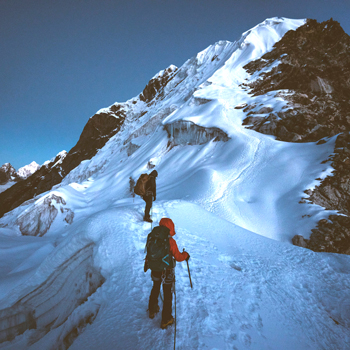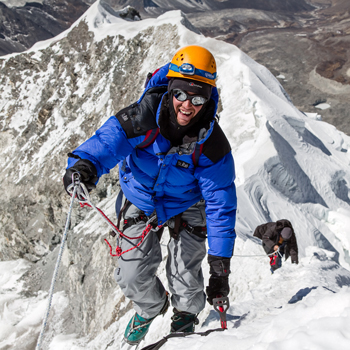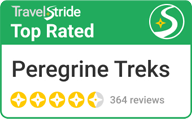Why should you climb Lobuche Peak?
- Wednesday August 10, 2022
- 0
One of Nepal’s most adventurous and breathtaking peak climbing expeditions is the ascent of Lobuche. Located along the ridge of Sagarmatha National Park in the Khumbu Region, Lobuche Peak rises directly to 6119 meters.
Typically, while climbing Lobuche Peak, there are two summits: Lobuche East (6119m) and Lobuche West (6145m). Similarly, the Lobuche West passes through the Khumbu glacier. In this area, ascending through majestic glaciers will give you an incredible sense. Your view of several glaciers and mountains will be breathtaking.
Lobuche Peak Climbing Cost
Lobuche Peak Climbing will cost USD 2450 with Peregrine Treks and take 19 days to complete. Several variables affect Lobuche price, some of which are listed here.
Visa and Permit Cost
To enter Nepal, a visa is necessary, and a visa fee must be paid. Only citizens of India are eligible for free entrance without a visa charge. Since the visa cost varies depending on how long you stay, 15 days will cost you about USD 30, while 30 days and 90 days will cost you USD 50 and 120, respectively.
Additionally, a necessary permit called the Lobuche Peak Climbing Permit adheres to the Nepal Mountaineering Association’s standard. The price of a permit varies by season, which is listed below.
Spring Season – USD 250
Summer Season – USD 70
Autumn Season – USD 125
Winter Season – USD 70
Similarly, according to NMA, the local area permit would cost you about USD 20. Moreover, you will cross the Sagarmatha National Park during Lobuche Peak Climbing. Additionally, there requires a permit for passing through this region, and the permit fee differs with the nationality.
Locals – Free
SAARC National – USD 15
Foreign Nationals – USD 30
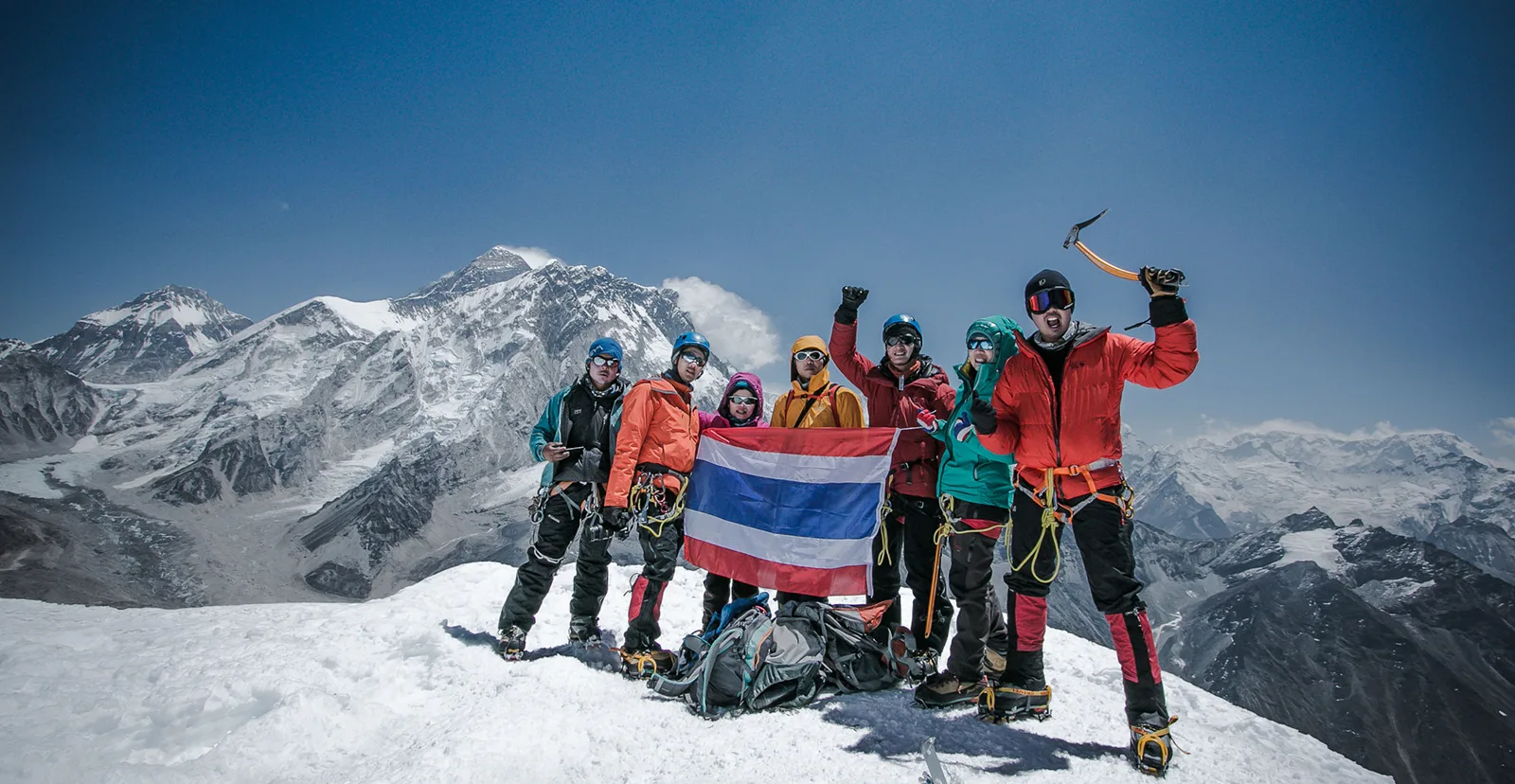
Guides and Porters
Your abilities may be put to the final test during the trial that involves traversing glaciers. A guide and porters are also required for this. Anytime you need assistance, they will do their best to assist you. Your daily expenses for the guide will be around USD 25 to USD 35, while your daily expenses for the porter will be around USD 15 to USD 25. Similarly, guides serve as a means of introduction to the community and a source of information about many aspects of the natural world encountered when trekking. Assisting you during the Lobuche Peak Climb are porters who can carry hefty backpacks up to 25 kg.
Accommodation and Meals
You may choose from hotels and inns in Kathmandu that provide high-quality amenities for between $10 and $200. There will only be teahouses offering the most fantastic services to you when you climb the mountain from Namche Bazaar. Moreover, you will stay at one of these teahouses for an average daily rate of between $5 and $7. Big hotels and lodges won’t be present in this area either. Every teahouse will be available to help you from Tengboche to Lobuche. Similarly, daily meal costs, which include breakfast, lunch, and supper, range from $5 to $10. This includes typical snacks like Momo, Chowmien, Sukuti, Thukpa, and lunch staples like Dal Bhat Tarkari.
Supplementary Costs
Set up $50 to $100 daily for unexpected expenditures when climbing Lobuche Peak. You may bring extra food, water bottles, and equipment on occasion. Additionally, you could discover unique artwork and crafts in the Everest Region that symbolize magnificent ancient Buddhist culture and that you wish to bring home with you. In a similar vein, supplementary costs also include internet access, sim cards, and hot showers.
Everest Base Camp Trek with Lobuche Peak Climbing Itinerary
One of the most remarkable treks will include the Everest Base Camp Trek with Lobuche Peak Climbing. This expedition explores a sizable portion of the Everest region, allowing you to understand the central themes from significant perspectives.
Day 1: Arrive in Kathmandu (1400m)
You’ll be arriving in Kathmandu on this day, and our representative will pick you up from the airport in a private vehicle and transport you to one of the city’s most amazing three-star hotels.
Day 2: Flight to Lukla from Kathmandu and Trek to Phakding (2,652m)
After a lovely breakfast, we will fly from Kathmandu to Lukla in 35 minutes. Tenzing Hillary Airport, the riskiest airport in the world, will greet us. We will trek for 4 hours to Phakding on the same day. We will continue to make plans for the next day’s trek while staying the night in Phakding.
Day 3: Trek from Phakding to Namche Bazaar (3,440m)
After a delicious breakfast and a gorgeous morning, we are ready to trek to Namche Bazaar. We’ll stop in Monjo village as we pass through for a fantastic meal at one of its teahouses. Similarly, after a 5 to 6-hour trek, we will arrive at Namche Bazaar, a stunning hamlet. At the Namche Bazaar, we’ll spend the night.
Day 4: Acclimatization day at Namche Bazaar
We’ll rest today in Namche Bazaar as we explore the surroundings. Similarly, we’ll be stopping by a few local monasteries. Likewise, we won’t spend any time going on a trek near the Everest View Hotel to take in the views of many mountains, including Ama Dablam, Makalu, Lhotse, and Cho Oyu.
Day 5: Namche Bazaar to Tengboche (3,870m)
After a lovely breakfast, we will leave Namche Bazaar and trek to Tengboche. Within 6 hours of trekking, we will reach Tengboche by passing through the wide valley of Gokyo Valley and following the Bhote Koshi River’s margin. Similarly, we will inspect Tengboche Monastery, one of the most remarkable monasteries in Nepal. We’ll spend the night at Tengboche.
Day 6: Tengboche to Dingboche (4,360m)
The lovely breakfast and spectacular dawn will give us tremendous energy for our day’s trek. In the same vein, we will be monitoring the particular trial known as the Musk Dear trial as it leaves the Deboche settlement. We will then proceed towards the Dingboche after having a meal at one of the teahouses and crossing the numerous bridges. After a 4 to 5-hour trek, we will arrive at the magnificent village of Dingboche, where we will spend the night.
Day 7: Acclimatization day in Dingboche
At Dingboche, this is a relaxation day. We will tour the area and take in the scenery, including the deep Chukkung Valley and Pheriche Valley. The breathtaking vista of the Himalayas, including Ama Dablam, Kanchenjunga, Lhotse, and Everest, will enthrall us to the uttermost.
Day 8: Dingboche to Lobuche (4,940m)
Finally, we will trek to Lobuche, which is our first target. We will arrive in Lobuche and spend the night there after a 5- to 6-hour trek from the Khumbu Glacier starting point.
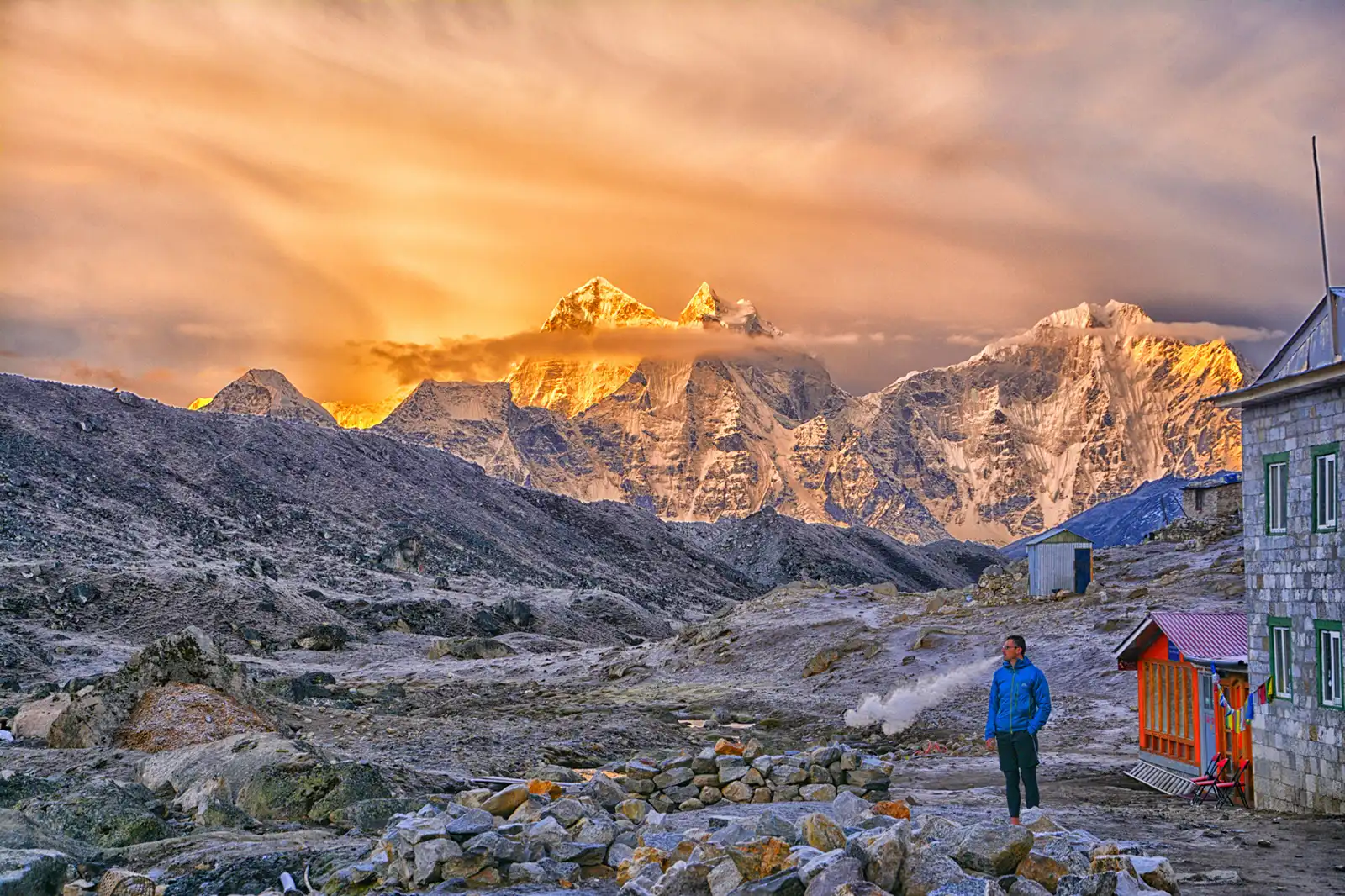
Day 9: Lobuche to Everest Base Camp and back to Gorak Shep (5,170m)
We will start our trek to our next destination with the morning breakfast. Ascending straight uphill from within the Khumbu Glacier within 5 hours, we will end up at Everest Base Camp. Likewise, after exploring EBC, we will return to Gorak Shep within 3 hours.
Day 10: Gorak Shep to Kala Patthar and downhill to Lobuche (4940m)
After having a fantastic morning breakfast in the teahouse, we will trek straight uphill to Kala Pathar. Taking unique pictures for memories, we will descend back to Lobuche within 3 hours of the trek and stay overnight at Lobuche.
Day 11: Lobuche to Lobuche Base Camp (4,950m)
The short, 1-2 hour trek from Lobuche to Lobuche Base Camp will kick off the rest of our adventure on this lovely day. As you go to Lobuche Base Camp, you can vividly glimpse Ama Dablam and Tawache. Lobuche Base Camp will be our base for the night.
Day 12: Lobuche Base Camp to High Camp (5,400m)
We will reach the Summit after a 3 to 4-hour trek from Lobuche base camp, passing through several glacier lakes. Similarly, we will either camp out or stay in one of the teahouses in the High Camp.
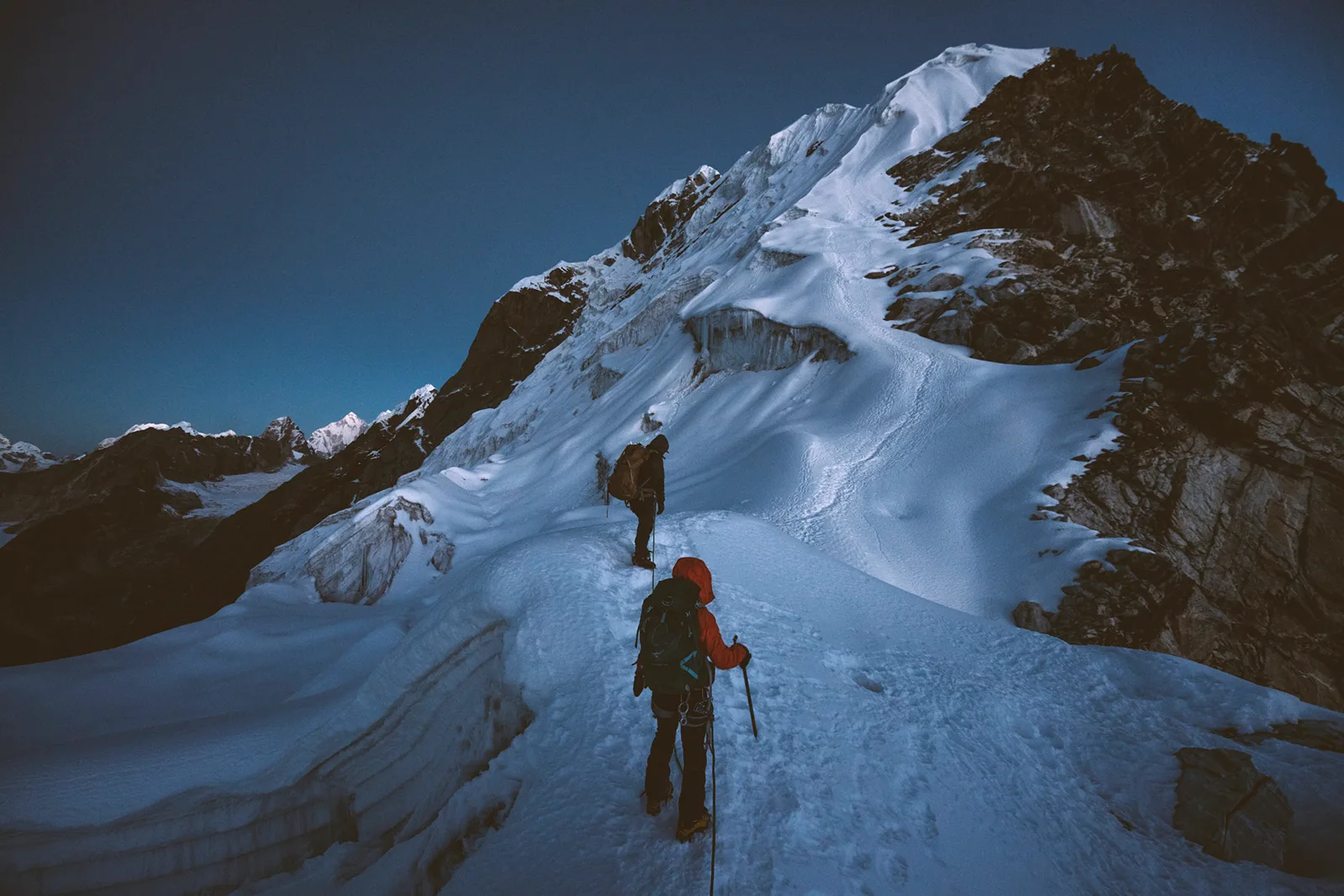
Day 13: High Camp to Summit and trek back to High Camp (6,119m)
This day’s trek will be a little more complicated than other days. We will move toward the Summit after a lovely breakfast. The tremendous challenges for us will be the slippery terrain and steep hills. After more than eight hours of trekking, we will have reached the peak. We get a clear view of numerous peaks, including Everest, Lhotse Kanchenjunga, and many others. We’ll snap a few pictures and then head back to high camp, where we stay overnight.
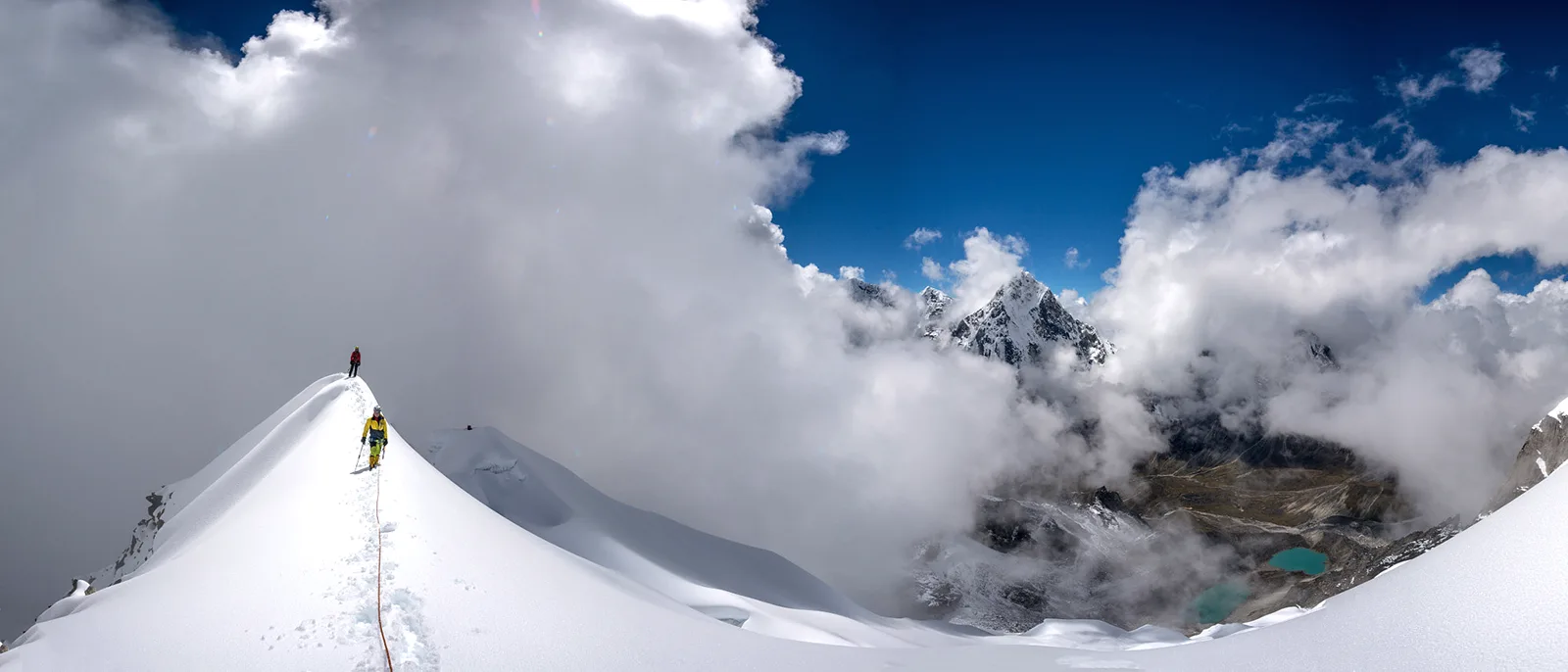
Day 14: High Camp to Orsho (4,160m)
After a lovely breakfast, we’ll pass Lobuche East Base Camp on our trek to Orsho. We may reach Orsho in less than 5 hours after trekking through the Chukkung Valley. We’ll spend the night at one of the Orsho teahouses.
Day 15: Orsho to Khumjung (3,780m)
We will reach Khumjung after a four-hour downhill trek via the ijma River. We would go to lovely Tengboche and Tengboche towns en route. Today, we’ll spend the night at Khumjung Valley.
Day 16: Khumjung to Lukla (2,860m)
After a fantastic breakfast, we will trek Lukla. From Khumjung to Lukla, the valley is lined with a picturesque village and a dense pine forest. We’ll stop at one of the teahouses along the trail for lunch. Similar to that, we will reach Lukla after a 7-hour trekking.
Day 17: Fly back to Kathmandu from Lukla
After a lovely meal in the morning, we will fly for an astonishing 35 minutes before landing in Kathmandu.
Day 18: Kathmandu Sightseeing
On this day, we will provide you with a private vehicle and convey you to stunning traditional temples of Kathmandu, including Swayambhunath, Pashupatinath, and Patan Durbar Square. We’ll also spend a few nights in Thamel, where we’ll bid you a quick farewell.
Day 19: Departure
Before three hours until your flight, we will drive you in our vehicle after a sumptuous breakfast. You can depart Nepal on this day by setting up the necessary paperwork.
Lobuche East Vs. Island Peak
The Eastern Himalayas of Nepal’s Lobuche East and Island Peak are both among the most significant climbing peaks. Both are lies in the Everest region and share similar adventure natural elements. The ascent of each peak is also remarkable in its way.
Why should you climb Lobuche Peak? and its Difficulty Level
These two mountains have summits higher than 6000 meters above sea level. Both of these summits are moderately tough. However, Lobuche Peak is a little more challenging to climb than Island Peak. The Lobuche Peak East is a feasible triangular-shaped peak with a difficult ascent up a straight slope. It is simple to ascend the trail that leads to Island Peak. Similarly, anyone may climb Island Peak, regardless of experience level. Therefore, Island Peak is simpler to climb than Lobuche East.
Best Season to Climb
Keeping that in mind, both peaks symbolize the Everest region. It implies that the local climate fluctuates a much. Nepal’s eastern Himalayas often experience the monsoon before the rest of the country. Similar weather and climatic trends are mirrored by both Lobuche Peak and Island Peak while in the exact location.
The two ideal seasons are spring and autumn for climbing Lobuche Peak and Island Peak. Winter and summer seasons might not be appropriate for these two summits either. You will also be able to see glaciers on Lobuche East and Island Peak, as well as a clear view of Everest, Makalu, and other Himalayan peaks in the spring and autumn.
Accommodations and Meals
The experience of staying in the Everest region is one that one will never forget. The breathtaking vistas of the incredibly spectacular mountains from the teahouses will relax your eyes and refresh your spirit. During your trek in the Everest region, teahouses will be available to you to provide the amenities. Teahouses are a kind of accommodation available at both Lobuche East and Island Peak. It will cost between $5 and $6 each day. The teahouses in Lobuche East and Island Peak both serve the same kinds of traditional Nepali meals.
Physical Fitness and Training
Physical fitness is crucial if you plan to trek any of the peaks in the Everest region. These summits rise beyond 6000 meters, necessitating extraordinary perfection in pre-trek exercise and a high degree of fitness. Additionally, as Lobuche Peak is more demanding to climb than Island Peak, you will exert the most energy while trekking.
You will need to be conscious of your physical fitness level since Lobuche East will put your trekking abilities to the test. The energy required for trekking will be similar to that of Lobuche East in the case of the island summit; however, you must undergo rigorous preparation before mounting both peaks.
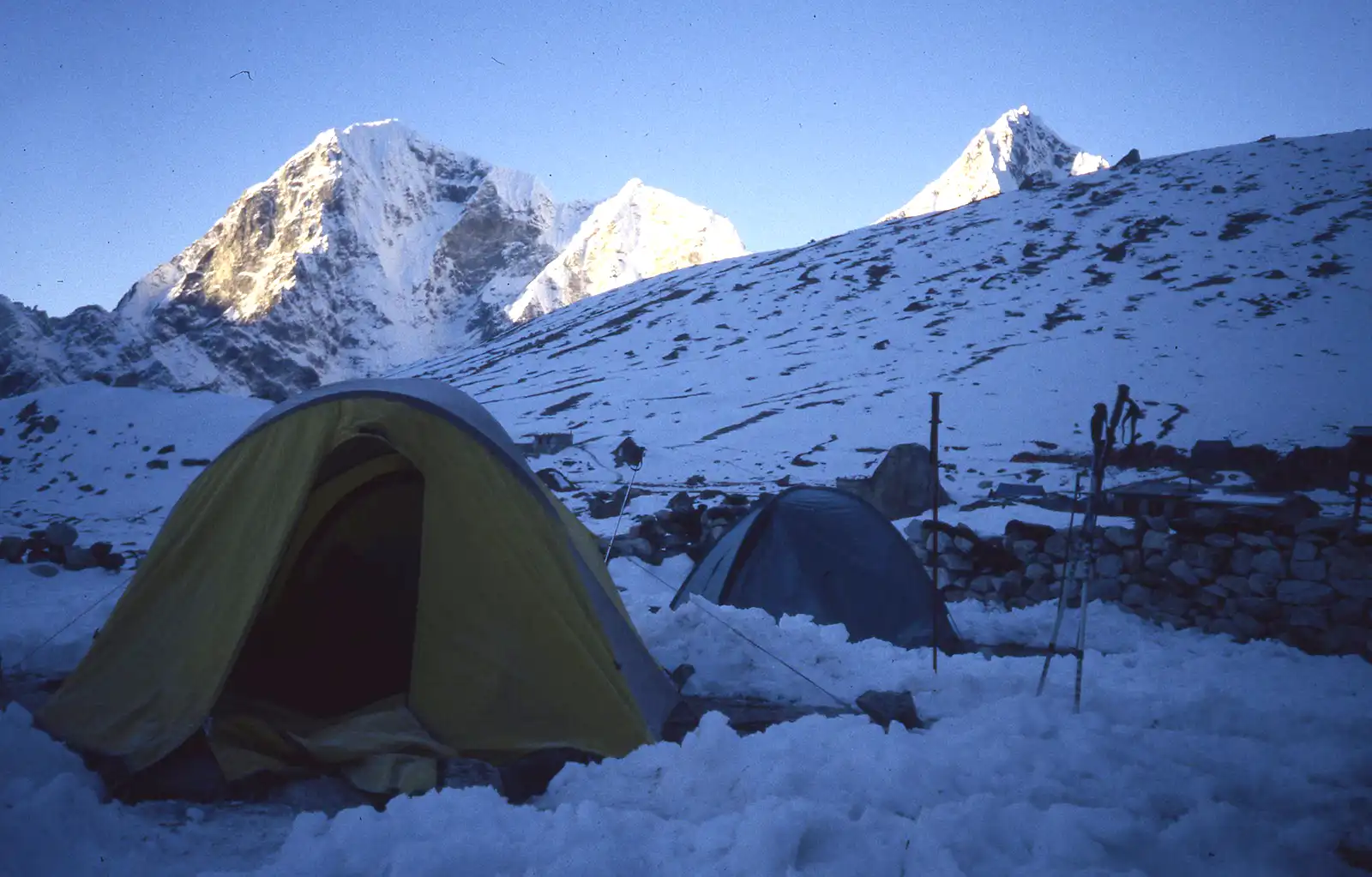
Culture and Tradition
Sherpas serve as the embodiment of the Everest region. Similarly, Lobuche East, Island Peak is comprised of and has the same culture, heritage, and religion. You will be astounded by the antique historical artworks and crafts associated with Himalayan people groups in the Buddhist culture that stretches from Namche Bazaar to Dingboche settlements. Identical to how both peaks’ itineraries pass through the town of Tengboche, you will see the monastery, a significant tourist destination. The Losar festival is the main festival for most locals, Sherpa. A similar cultural impact is present in both Lobuche East and Island Peak.
Lobuche 2 May
Lobuche Peak Climbing in May is like having the chance to wrap up your excursion before the end of spring. The ideal month to trek Lobuche 2 will be May. The region’s typical temperature will be around -2 to -9 degrees Celsius. Like the temperature, the humidity will range from 75% to 80% at this time of year. This season’s rainfall at Lobuche Peak will just be beginning with 108mm. The snowfall in May also ranges from 780 to 797mm. Furthermore, depending on the weather, the length of the day will be between 12 and 13 hours. In a similar vein, the UV index in May will be 1, necessitating the use of an appropriate sun block.
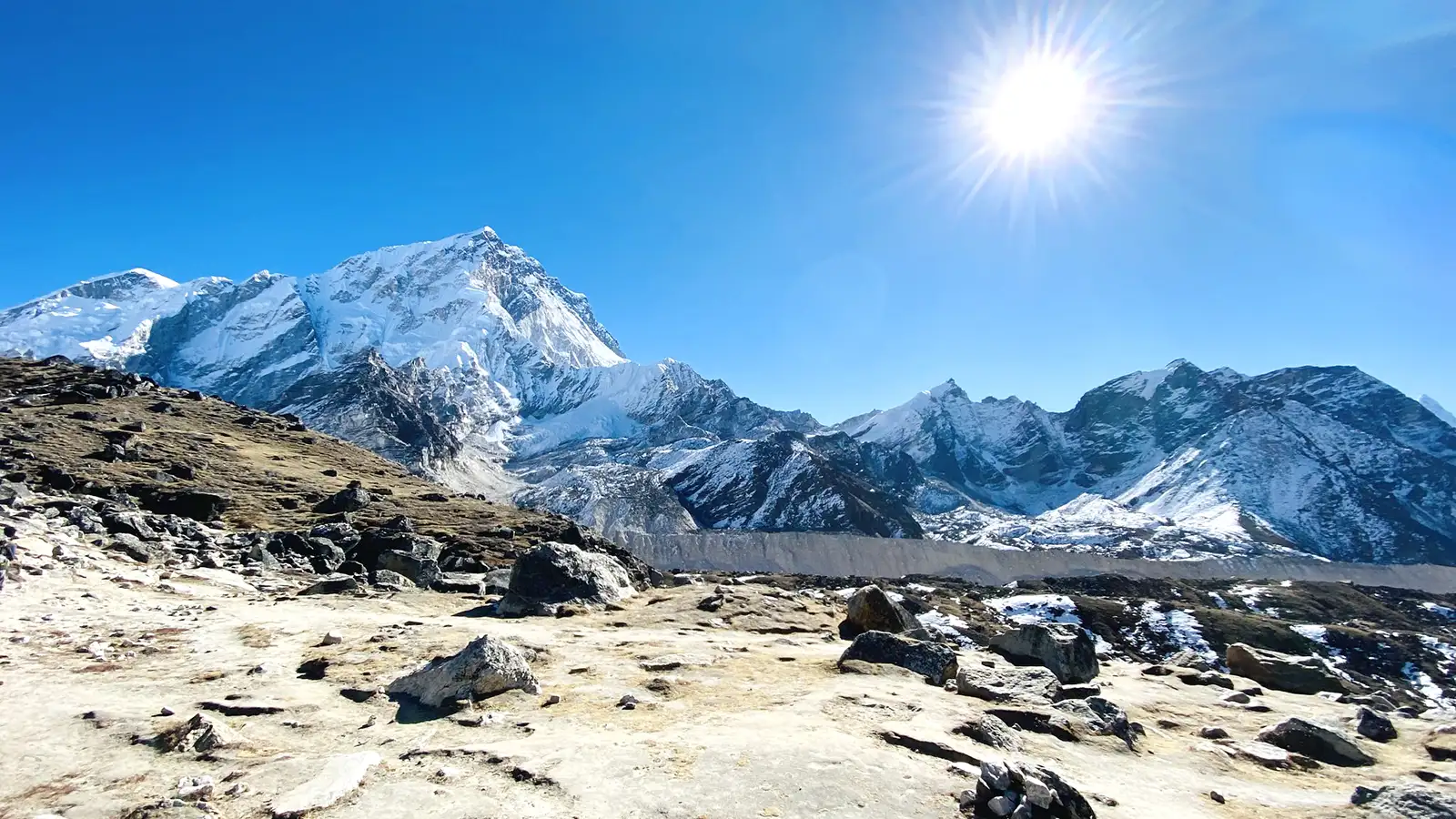
Lobuche Weather
According to the four seasons, the weather in Lobuche may be categorized. Lobuche has several weather patterns during each season, as mentioned here.
Weather in Spring Season
This season essentially covers the months of March through May. The weather will be perfect for the Lobuche trek. The temperature will be around -2 to 5 degrees Celsius during the day and between -8 and -2 at night. You may also see spectacular mountains in precise crystal detail, with surrounding flora developing on its own and a lush landscape. You’ll enjoy your trek more in the chilly wind and warm sun.
Weather in Autumn Season
The Lobuche Peak trekking season’s optimum time is often in the fall. The weather will be clear after the chilly days with a pleasant wind and a definite sun. The temperature at night will be about -10 degrees Celsius, while during the day, it will be around 2 to 5 degrees Celsius.
Weather in Summer Season (Monsoon)
Summer Season includes the months of May through August. The challenge will be pretty treacherous, making it more adventurous. The east Himalayas will be marginally visible due to clouds and fog. Extreme sunshine and temperatures of 10 degrees Celsius are forecast for the day, while -5 degrees Celsius are forecast for the evening.
Weather in Winter Season
The region will see significant cold from late October to late December. You’ll have to put more effort into ascending because of the bitter wind and deep snow. Similarly, you may climb in the winter if you want to experience the snowy atmosphere. Around -10 to -15 degrees Celsius will be the afternoon temperature. Additionally, the temperature at night is below -20 degrees Celsius.
